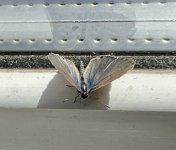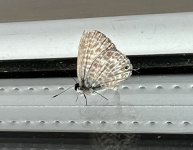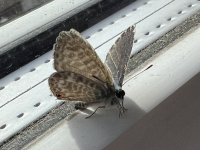Bismarck Honeyeater
Barely known member
Was fortunate enough today, to be invited to see a Lang’s Short-tailed Blue that had entered a house in Berkshire a week or so ago. Also saw it get released. The house owners said they have not bought any legumes lately, and it seems this individual came in through an open window.
A friend recently back from Spain has told me that LSTB’s were 3x more common than is usual. The supporting cast of vagrant Southern Moths and Swifts lately is also good circumstantial evidence for a genuine migrant, in my opinion.
Does anyone have knowledge of any movements recently in northern France, or elsewhere?



A friend recently back from Spain has told me that LSTB’s were 3x more common than is usual. The supporting cast of vagrant Southern Moths and Swifts lately is also good circumstantial evidence for a genuine migrant, in my opinion.
Does anyone have knowledge of any movements recently in northern France, or elsewhere?









